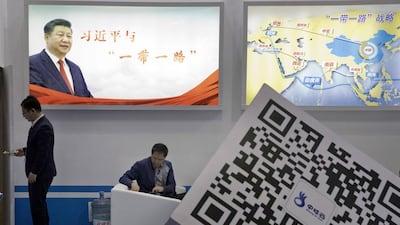The One Belt, One Road (Obor) project excites economists and analysts interested in fresh prospects for international trade and cooperation. Since the idea was unveiled in 2013, the project has become synonymous with the potential of certain emerging market economies and the rise of China’s economy. So what exactly is Obor?
In 2013, Chinese president Xi Jinping proposed a new economic framework that would connect China’s Silk Road Economic Belt project in Central Asia with its Maritime Silk Road through connected bodies of water from the South China Sea to the Indian Ocean. In essence, these trade strategies focus on increasing China’s connection with countries along the historical Silk Road in Eurasia, while creating a new Silk Road through Asia to South Asia and Africa.
One part of the project is centred on the creation of road connections between China and Eurasia, including infrastructure projects such as highways and rail lines. The other part of the project concerns maritime routes that will connect China with South East Asia, South Asia and ports up and down the east coast of Africa.
The scale of this vision, if completed, is the project’s greatest selling point and potential challenge. The trade links outlined would cover 65 per cent of the world’s population, one-third of global GDP and a quarter of all the goods and services in the international economy.
Such a concentration of goods and services would upend how traditional commodities such as energy are traded. Some observers have compared the project to the Marshall Plan in Europe after the Second World War.
The project has its share of critics. Some analysts, including those at Fitch who wrote a report this year on the Obor, have argued that China is pushing forward with the project to extend its political influence.
They suggest that there is no concrete demand for the Obor’s infrastructure projects in under-developed central Asian countries. Rather, China is building these projects as a way of extending and entrenching its political influence.
Indeed, some American observers also view the project as a way for the Chinese to expand their influence in new parts of Africa, South Asia and even Europe. China’s construction industry is already booming across Africa.
New maritime routes connecting China to the rest of littoral Asia would expand Beijing’s economic (and political) power to a remarkable degree.
A challenge for the programme, however, is funding. Conservative estimates note that Obor will require at least $2 to $3 trillion each year. Several investment vehicles have been created such as the Asian Infrastructure Investment Bank and the Silk Road Fund, but the debate about the use of public funds for these projects show a measure of concern.
The One Belt, One Road idea is an international community project with China taking the lead. If the Chinese are able to convince countries that Obor will be a force for good, the project could revolutionise global trade.

